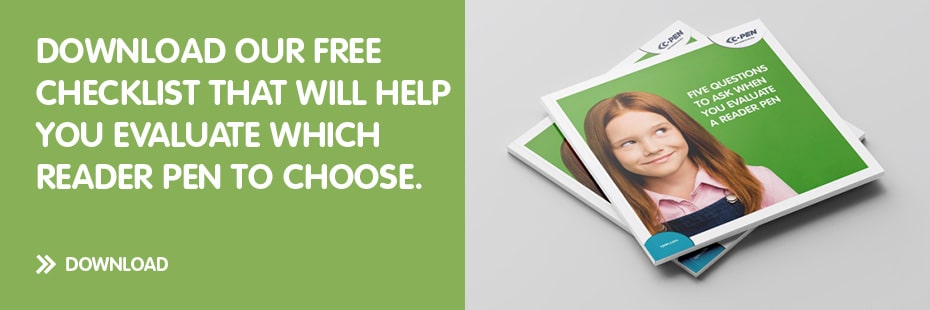
Choose a reader pen with a natural text-to-voice-emulator
When considering what kind of reader pen you should choose, there are a lot of factors to consider. One factor that you might not think of is the importance of the synthesised voice. Because regardless of which smart features the reader pen has, a high-quality synthesised voice is essential to make it a valuable and versatile tool for reading and learning. And just as crucial for a good text-to-voice emulator is the ability to control voice speed and length of pauses between words without compromising clarity.

A clear and nuanced voice makes the text easier to understand
When using a reader pen to aid students with a reading disability, the text-to-voice function must have a natural synthesised voice with high quality. It must be easy to perceive, with low distortion and a high signal-to-noise ratio. It’s also essential that the reader pen pronounce the words with high accuracy, so there isn’t any doubt about what word it is.
Intonation is also essential. Even small nuances in the language can make it difficult to understand. In the same way, dialects and variants of the language, like American, Australian and British English, influence how easy it is to process the information. The more dialectic variants available in the reader pen, the better. That’s why the C-Pen, for instance, has six different variants of English.

Different disabilities need different voice speeds
The more customisable the reader pen’s speaking voice is, the more you can adapt it to individual needs. Controlling the voice’s speed is vital, not just for people with dyslexia but also for those with intellectual or cognitive disabilities. The latter doesn’t have the tools for processing information fast and therefore needs to slow the pace of the speaking voice. But you must be able to do this precisely. Just slowing the speech down will make it sound unnatural. In the C-Pen, we have solved it by adding extra pauses between words and punctuation marks, creating more time for the listener to process the content. You can also add extra pauses between words if every word needs time to be processed by the reader.
Another feature that aids the reading is showing the text on the screen and highlighting the words as you read them, like karaoke. That way, the reader can visually follow the reading at the right pace. If you don’t understand a word, you can highlight it, and it also zooms in on it to give it more visual impact while being pronounced.


